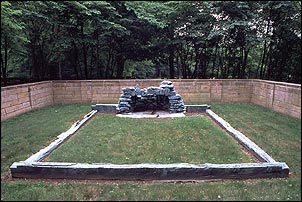To my knowledge, there are 5 major National Parks dedicated to Abraham Lincoln. These 5 sites are his birthplace near Hodgenville, Kentucky, his boyhood home in Lincoln City, Indiana, the adult Lincoln home in Springfield, Illinois, the assassination site at Ford’s Theater in Washington, D.C and the Lincoln Memorial in Washington D.C. There are also numerous battlefields over which he played an important role, most significantly Gettysburg, PA.
In early 2011, there was a poll suggesting that Ronald Reagan was America’s greatest president. This was probably heavily biased because the poll was taken around Dutch’s birthday and the number of respondents who took the poll were probably alive when Ronald Reagan was president therefore skewing the results. Abraham Lincoln was number 2 in this poll (Clinton was 3rd, Obama and Bush II were both ahead of Jefferson which is shocking to me as a UVa graduate, but I digress). Over time, most polls I have seen have put Lincoln near the top. When you take out party affiliation, and survey independents you can see that Lincoln comes out on top.
This blog isn’t going to get into historical details, but in my view, when America was just a “teenager” Lincoln was the adult that held it together through her tantrums. Because he was assassinated by John Wilkes Booth shortly after the Civil War officially ended, he was not around to see the US survive, rebuild and prosper into the late 19th and early 20th centuries. It is safe to say that Lincoln had outlined the principles for this to happen. Many have often wondered what brought Lincoln into this position of steadiness and discipline. There are hundreds of Lincoln biographies and articles, but one must start with his childhood and upbringing to help understand from whence this man came. This is why I think that most students of Lincoln should bypass the Lincoln Memorial and the Ford’s Theater for insight into the man, I suggest visiting the sites dedicated to the man’s life.
Abraham Lincoln was born in Kentucky and came to Washington, D.C. as a politician from Illinois. However, (as the state of Indiana claims, confirmed by the NPS), Lincoln spent much of his formative years in Southern Indiana. About an hour’s drive from Vincennes (and the George Rogers Clark National Historic Site) lies the memorial to Abraham Lincoln’s boyhood home. The memorial is near a town called Gentryville, IN and is in the middle of nowhere. In fact, because there are not any municipalities nearby, I assume they just made its name up, Lincoln City, Indiana, for the purposes of the memorial. One can only imagine what this area would have been like without the interstate and state route nearby. It is the 21st century and this still seems like “the frontier”.
The park has a remarkable visitors center with extremely friendly guides. There is a 15 minute film to help get oriented to the Lincoln family tree. Lincoln’s father, Thomas, moved to Southern Indiana because of land disputes in Kentucky. In Indiana, he was able to get a plot of land on which to farm AND because Thomas Lincoln was opposed to slavery, he preferred farming in Indiana where slavery was illegal. The area is wooded, with lots of wild animals (at the time, not now as far as I can see). This is not the original house, but a remake:
I never knew that Lincoln’s mother died of milk sickness when he was a young boy. Milk sickness was a common ailment at the time from when cows ate snakeroot. If one consumed the milk of such a cow, it could be fatal. Her gravesite is marked with a tombstone in the park.
Thomas Lincoln remarried a widow from Kentucky brought into the family children of her own. Her name was Sarah Bush Lincoln. During his teen years, was when his thirst for knowledge was fostered by books that she had provided him and education he received in a school nearby. When Lincoln was not working on the farm, he was reading or doing whatever he could to further his knowledge. He gained a job as a surveyor and did some work transporting goods down the river to New Orleans where he first saw slaves, this obviously made an impression on him, and impact his actions in later years.
When Lincoln was 21, his father moved the family yet again to Illinois where Abraham Lincoln would spend the next 30 years. Due to his legacy here, this plot of land became a memorial upon Lincoln’s assassination in 1865. The stones marking the actual cabin for the Lincoln family were bronzed for preservation.
There is an extremely tall (120 ft to be exact) flag pole near the visitor's center.













